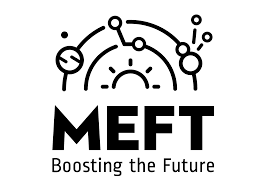Speaker
Description
Information spreads across social networks much like a colony of organisms that grows exponentially. And just like organisms compete for resources, information competes for human attention. In this project we compare the diffusion of real news and of misinformation, using a simple model that takes inspiration from biological and physical processes. We call cascade the set of copies of information derived from a single source. In our case, we are analyzing Tweets and therefore a Twitter cascade is a set of re-tweets of an original message.
In the simplest version of our mode, the growth of the information cascade follows an adapted geometric random walk, given by:
dN(t)/dt = a * exp(-gt+ε),
where N(t) is the size of the cascade at time t and a and g are fitted parameters that capture the competitive ability or fitness of the piece of information. Randomness is captured by the parameter, which has a Gaussian distribution. The two fitted parameters represent different aspects of the process: a measures the appeal of the information when it is first introduced in the social network, while g captures the rate of loss of importance as time passes.
This simple model was shown previously by our group to effectively capture the growth of twitter cascades. We will now apply it to misinformation and expand the model to explicitly account for competition between tweets.
In parallel, we will also apply this competition model to diffusion on a social network. We will ask how relevant the properties of the network are to the spread of misinformation. Since there is no precise analytical solution to growth on a network, we will make use of Monte Carlo simulations, combined with Bayesian methods to estimate the best fit for the model parameters. In the case of the network, the probability that a node (a person) shares a given piece of information is given by:
p(share) = a' * exp(-g't+ε),
where a' and g' are fitted for each cascade and are this model’s equivalent to the parameters described above.
With this analysis, we expect to better characterize the differences in the spread of fake and real news, across different topics. We can then devise better strategies to stop the spread of misinformation.
